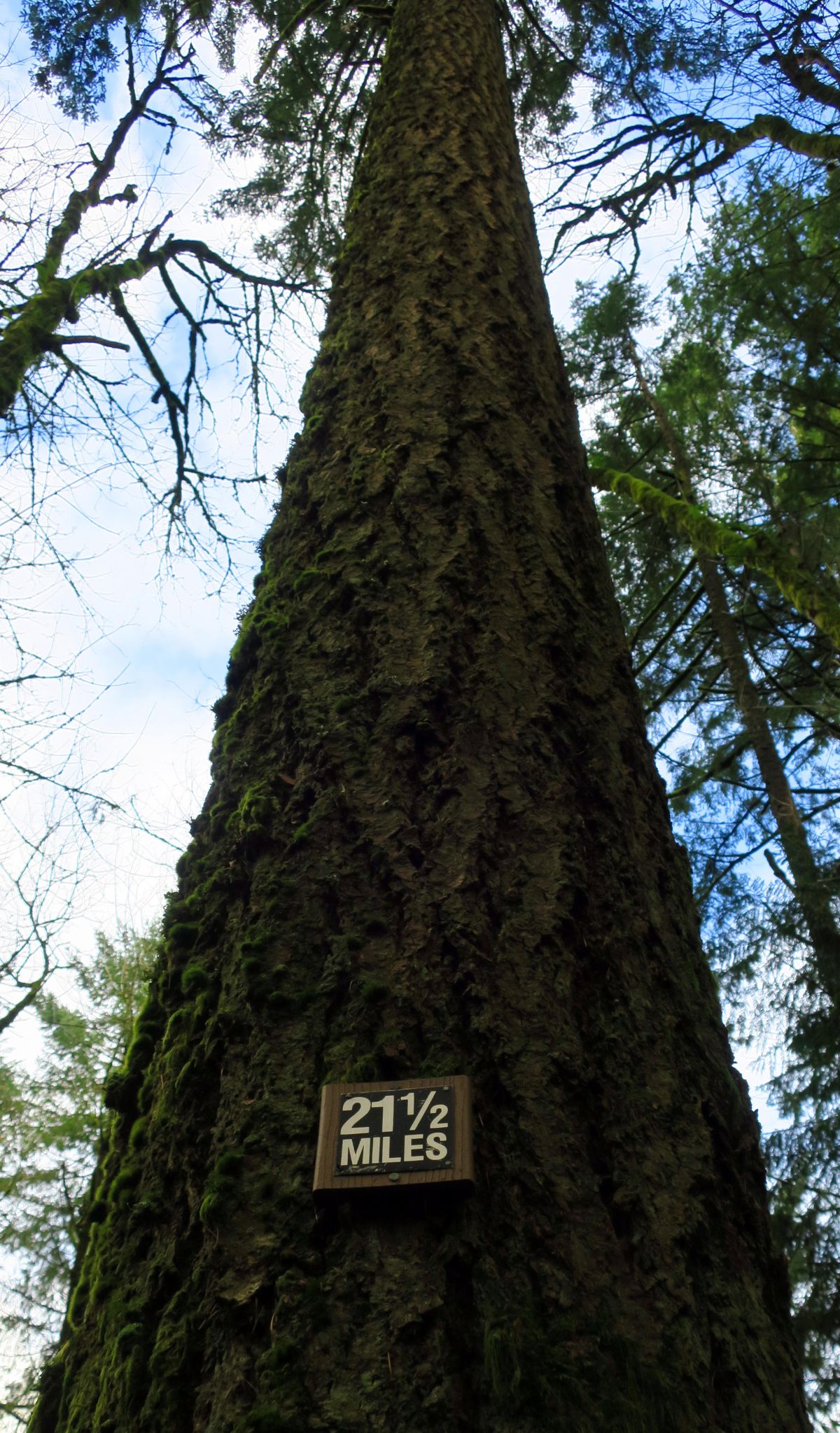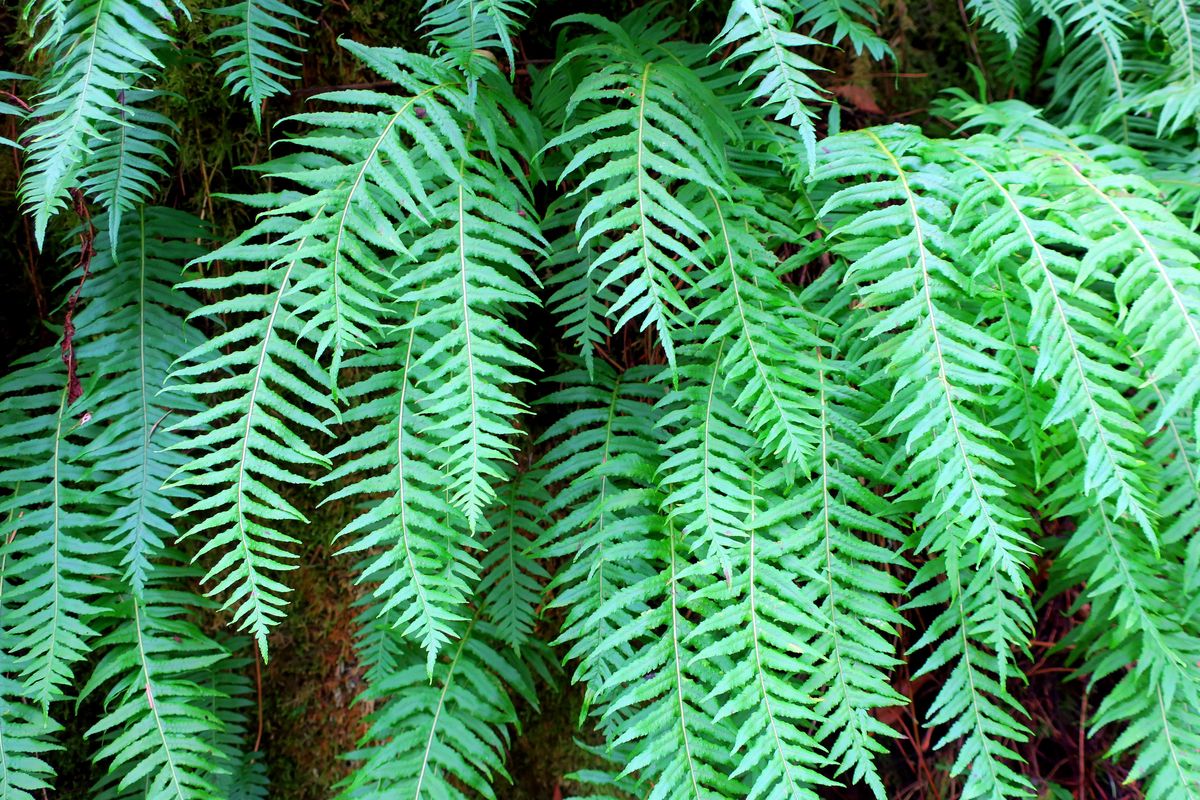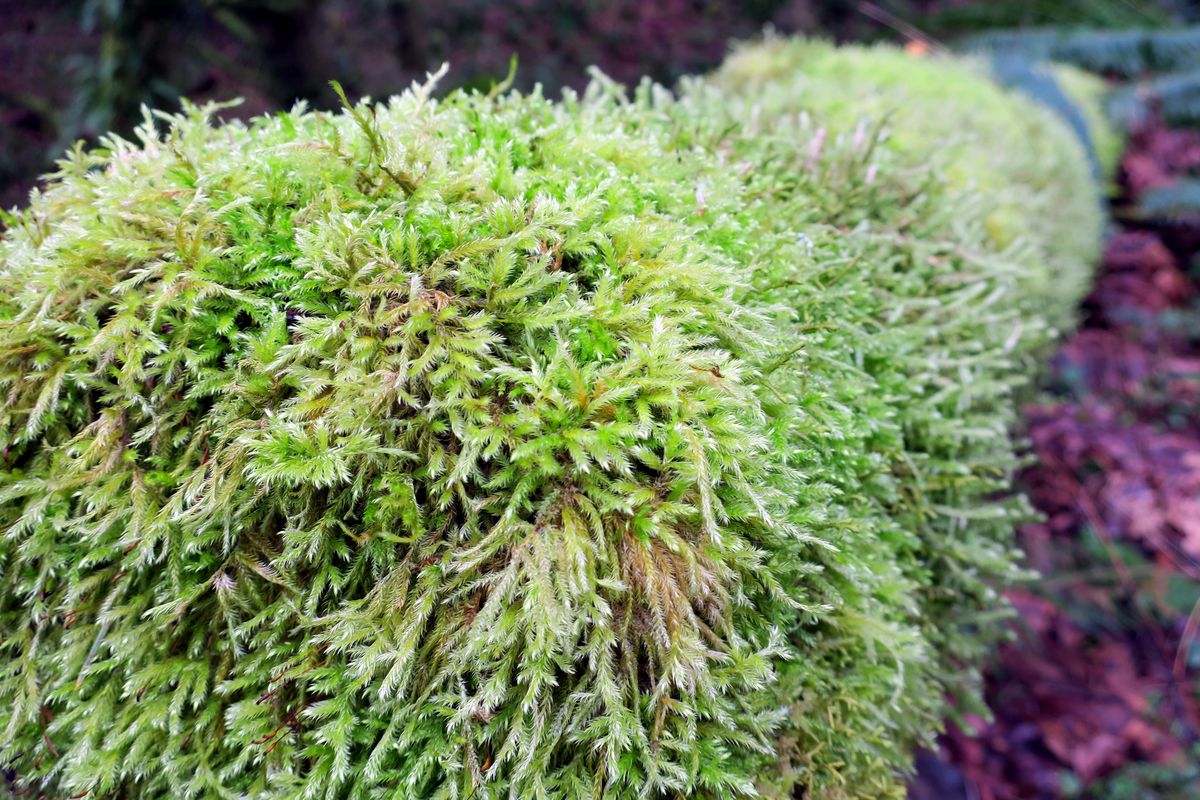Inside Portland’s urban park
New ferns poke out of the hillside along Leif Erikson Drive in Forest Park. (John Nelson / The Spokesman-Review)
PORTLAND – For starters, let’s visit the Forest Park witch.
Starting at the Lower Macleay Trailhead, it’s just a few minutes of hiking through Portland’s beloved urban woodland to what’s commonly called “The Witch’s Castle.”
The 0.75-mile trail takes you from busy city streets almost immediately into a rugged ravine along Balch Creek, a gorgeous stream that is habitat for cutthroat trout, past giant Douglas firs and western red cedars to the tumbling remains of a stone house where a witch is said to live.
That kind of access, and that kind of weird legend, is what makes Forest Park the heart and soul of Portland. Rose City? Portland really should be called the Forest City, thanks to its wild park.
Urban treasure
With 5,200 acres and 80 miles of hiking trails, Forest Park is the nation’s largest natural area inside a major city. The busy Lower Macleay Trail to The Witch’s Castle – it’s really the remains of an old stone restroom – just touches the surface of what you can find inside the park.
Stretching 8 miles northwest along the Willamette River through the Tualatin Mountains, the park gets wilder the farther you get from downtown. The 30.2-mile Wildwood Trail runs its length, zigzagging like the folds of an accordion through the park’s rugged ravines, extending into neighboring Hoyt Arboretum and Washington Park.
You can also horseback ride or bicycle through Forest Park on 11.2-mile Leif Erikson Drive, an old road that was built in the early 1900s in a failed attempt to develop the steep hillsides of the Tualatin Mountains. The rough roadway is now a double-track trail, perfect for a sturdy mountain bike.
Innumerable side trails crisscross and connect between Leif Erikson Drive and the Wildwood Trail, offering hikers many loop options to explore. Several trails climb steeply to the crest of the Tualatins above 1,000 feet.
“There’s nothing really like (Forest Park) in any city anywhere,” said Renee Myers, executive director of Forest Park Conservancy, a nonprofit that helps protect habitat and maintain trails throughout the park.
The conservancy is an example of how much Portland loves its wild urban park, with more than 1,500 volunteers donating thousands of hours of their time to preserve its character, Myers said.
Truth and fiction
The Witch’s Castle is just one of the legends having to do with Forest Park. The most famous story goes like this:
A middle-aged man named Frank and his 12-year-old daughter Ruth are discovered in 2004 living deep in Forest Park in a rough structure beside a small creek. They have created a small vegetable garden and have a rope swing. Ruth has educated herself by reading encyclopedias.
They tell police they have been living there for four years, undetected. Legend? It turns out to be true.
Their story was adapted into the 2009 novel “My Abandonment” by Peter Rock. And this year, the movie “Leave No Trace,” which is based on the book, debuted at the Sundance Film Festival to critical raves. It stars Ben Foster as the father and Thomasin McKenzie as the daughter, scheduled for a limited national release this June.
Stories of homeless people living undetected in Forest Park are common. A park ranger told Portland Monthly in 2017 that he found a well-spoken young man living in a neat tipi, with a small wood stove, wood furniture and a fairly extensive library.
“More people feel safe camping in Forest Park than they do living under the Morrison Street Bridge,” Myers said. Officials say they move hundreds of homeless camps out of the park yearly.
It turns out that camping in Forest Park goes back years, said Tanya March, a volunteer who leads history tours at the park. As Portland developed, bored city children would often head to the park during the summer months.
“Their parents would just let them go camping in the park,” March said. “Today we would never our kids go off alone like that, but it was a different time.”
Explorations
While the Lower Macleay Trail offers easy access to Forest Park, some of the wildest and best trails are accessed off of Skyline Boulevard, which rolls through the highlands of the Tualatin Mountains.
Several trailheads lead off of Skyline or old roads and firelanes that intersect with the roadway. On a cool March day on the Ridge Trail, just off Skyline, the forest was just starting to wake up for spring. Hikers, bikers and runners were out enjoying the electric green of new growth and the sound of birds and rushing streams.
“I definitely feel like I’m deep in the forest when I come here,” said Tracy Broyles of North Portland as she walked her dog about a mile in on the Ridge Trail. “I enjoy learning all the loops you can do here.”
Jim Burkhart of Portland was also out walking his dogs. His reason for coming to Forest Park?
“Lots of trees, no people,” he said. “It’s not quite like going into a forest where you might go backpacking, but for a city park, it’s as close as you can get.”
The quintessential hike through Forest Park is the 30.2-mile Wildwood Trail. Most people only do sections of the trail, but some hard-core runners tackle it in one shot.
“We have a good number of ultramarathon runners who do it regularly,” Myers said. The Forest Park Conservancy executive director said her favorite section of the park is the remote northwest corner.
“The northern section of the Wildwood Trail is my favorite place,” she said.
Whether you want to get a quick wilderness fix on the Lower Macleay Trail or tackle the most isolated sections of the Wildwood Trail, everyone agrees they love the access Forest Park provides to Portland residents and visitors.
“It’s this wild place you can get to on a lunch break,” March said. “It’s right there.”
John Nelson is a freelance writer based in Seattle. Read his blog at ourgrandtour.net.











